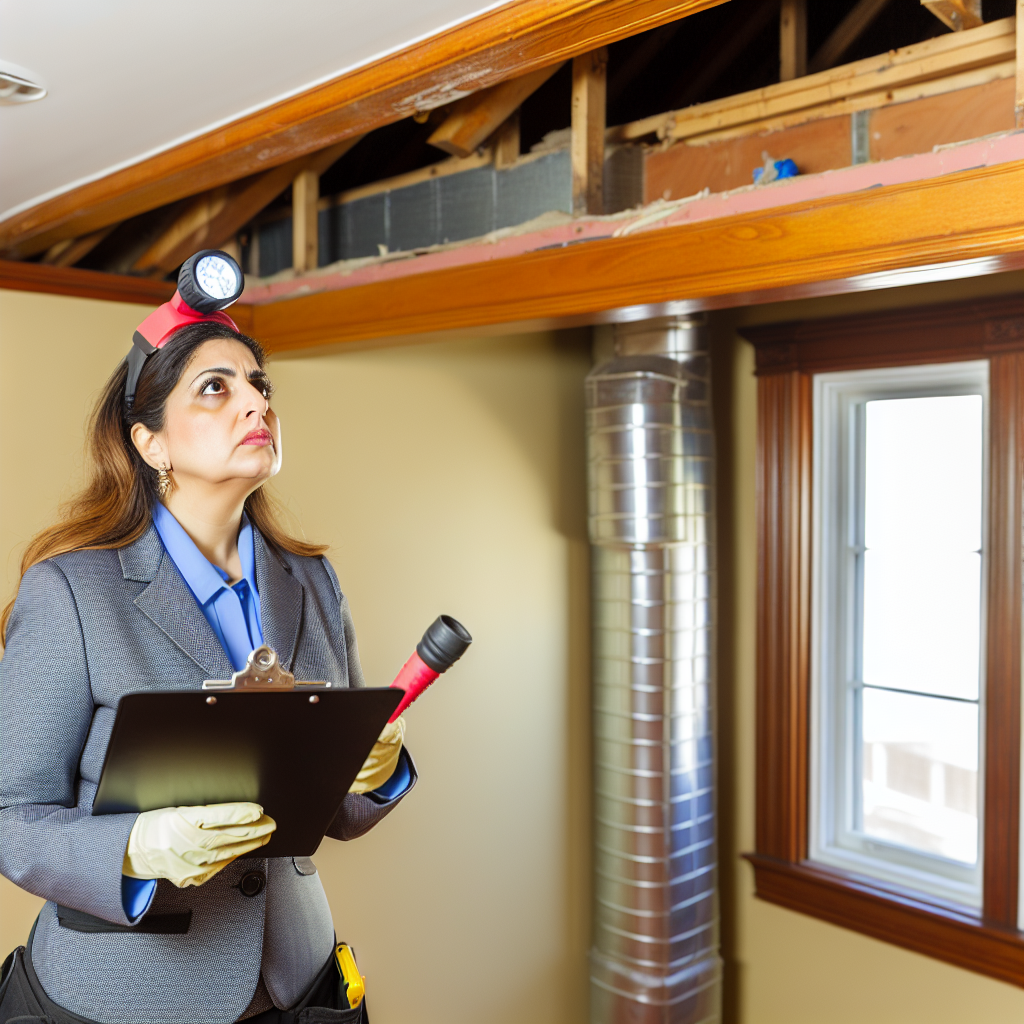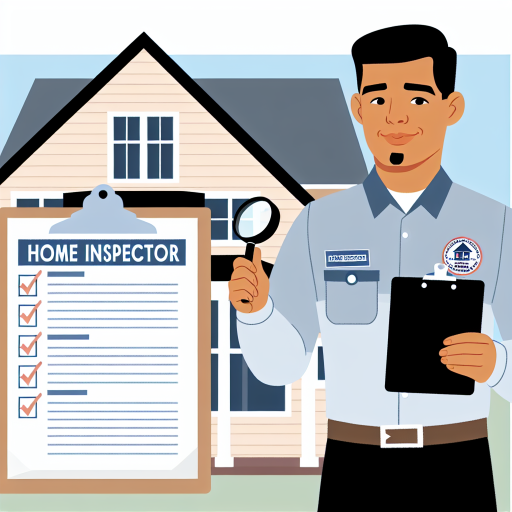Introduction to Home Inspections for Older Homes
Buying an older home can be both exciting and challenging.
One crucial step in this process is conducting a home inspection.
A home inspection helps identify potential issues that may arise in vintage properties.
Older homes often have unique qualities and charm but can also present hidden problems.
Therefore, understanding the importance of thorough inspections is vital.
Why Home Inspections Matter
Home inspections hold great significance when buying any property.
They reveal essential information about the condition of the home.
For older homes, this process becomes even more critical.
Inspectors will look at structural integrity, systems, and materials.
This knowledge empowers buyers to make informed decisions.
Common Issues Found in Older Homes
Older homes may have a range of common issues worth noting.
Foundation problems can lead to costly repairs if overlooked.
Inspectors often find outdated electrical systems that may pose safety hazards.
Plumbing issues, such as lead pipes or outdated materials, are also prevalent.
Additionally, problems with roofing and insulation can arise in vintage homes.
Choosing the Right Inspector
Selecting a qualified home inspector is crucial for a successful inspection.
Look for inspectors with extensive experience in older homes.
Check their qualifications and certifications to ensure reliability.
Read reviews from previous clients to gauge their expertise.
Lastly, ask for recommendations from trusted friends or real estate agents.
The Inspection Process
Once you secure an inspector, you can expect a comprehensive evaluation.
The inspector will examine various aspects of the property.
These will include the foundation, walls, roof, and systems within the home.
Take note of their findings and take them seriously.
This information will guide you in negotiating repairs or price adjustments.
Importance of a Comprehensive Home Inspection
Identifying Hidden Issues
A comprehensive home inspection reveals hidden issues in older homes.
Older homes often have outdated systems that require attention.
Common problems include plumbing leaks and electrical issues.
By uncovering these issues, buyers can make informed decisions.
Ensuring Safety
Safety is a critical aspect of home inspections.
Older homes may have safety hazards like faulty wiring.
Additionally, issues such as mold can pose serious health risks.
A thorough inspection identifies these dangers and promotes safe living.
Negotiating Power
Home inspections provide valuable leverage during negotiations.
Buyers can request repairs or adjustments based on findings.
This can lead to lower purchase prices or seller concessions.
Ultimately, a detailed report enhances your negotiating position.
Long-Term Investment Protection
A well-executed inspection protects your investment in the long term.
It helps identify maintenance needs for systems and structures.
Timely repairs can prevent more extensive damage in the future.
Consequently, you save money and maintain the home’s value.
Peace of Mind
Finally, a home inspection provides peace of mind to buyers.
Knowing the home’s condition allows for confident decision-making.
It reduces the uncertainty often associated with purchasing older homes.
Key Areas to Inspect in Older Homes
Foundation and Structure
Inspect the foundation for any visible cracks or settling issues.
Check for signs of moisture or water intrusion in the basement.
Pay attention to the overall stability of the structure.
Look for signs of sagging or uneven floors.
Consider hiring a structural engineer for a detailed evaluation.
Roofing
Examine the roof for missing or damaged shingles.
Look for signs of leaks in the attic or ceiling.
Check the age of the roof; older roofs may need replacement soon.
Inspect gutters and downspouts for clogs and proper drainage.
Plumbing Systems
Review the condition of the pipes, especially if they are galvanized.
Check for leaks under sinks and around the toilet.
Inspect the water heater for age and rust.
Ensure the drainage system functions properly.
Electrical Systems
Assess the wiring for any outdated or fraying components.
Look for ungrounded outlets, which can pose safety risks.
Check the electrical panel for adequate capacity and safety.
Consider hiring an electrician for a thorough inspection.
HVAC Systems
Inspect the heating and cooling systems for condition and efficiency.
Check for regular maintenance records for the HVAC units.
Look for signs of wear in ductwork, such as holes or leaks.
Consider the age of the units; older systems may need replacement.
Windows and Doors
Examine windows for proper sealing and insulation.
Check for any rot or damage in wooden frames.
Ensure doors open and close properly without sticking.
Consider energy efficiency when evaluating older windows.
Insulation and Ventilation
Inspect insulation levels in the attic and walls.
Check for adequate ventilation in the roof space to prevent moisture buildup.
Consider adding insulation to improve energy efficiency.
Exterior Elements
Examine the exterior for signs of peeling paint or wood rot.
Check the condition of decks, porches, and stair rails.
Evaluate drainage around the home to prevent water issues.
Inspect fences and other outdoor structures for stability.
Historic Features
Identify any original architectural features that contribute to the home’s charm.
Check the condition of historic materials, such as plaster or hardwood floors.
Consider the implications of any renovation on historic preservation.
Gain More Insights: Home Inspection Checklist For Assessing Roof And Attic Conditions
Structural Integrity: Foundations and Framing
Importance of Structural Integrity
Structural integrity plays a critical role in older homes.
A strong foundation ensures the overall stability of the structure.
Framing supports the roof and walls, preventing potential collapse.
Inspecting these elements can identify significant issues early.
Foundation Assessment
The foundation should be checked for visible cracks.
Cracks wider than a quarter-inch may indicate a problem.
Look for signs of settling, such as uneven floors.
Check for moisture accumulation around the foundation.
Water leaks can lead to mold and structural damage.
Consult a structural engineer for extensive repairs.
Framing Evaluation
Inspect the framing for signs of wood rot or damage.
Wood should be dry and free from insect infestations.
Check joints and connections to ensure they are secure.
Look for bowing or warping of the walls or beams.
Pay attention to any signs of water damage.
Addressing issues early can prevent costly repairs later.
Additional Considerations
Consider the age of the materials used in the construction.
Older homes may have outdated construction techniques.
Seek advice from professionals familiar with historic homes.
Understanding local regulations helps in renovation plans.
Ensure that any modifications maintain the home’s integrity.
Uncover the Details: Home Inspection Checklist For Examining HVAC Systems In Homes
Roof Condition: Shingles, Flashing, and Gutters
Inspecting Shingles
Begin by examining the shingles for signs of wear.
Look for missing or damaged shingles that may need replacement.
Check for curling or buckling, which indicates age.
Ensure that shingles are properly aligned and overlapping.
Additionally, assess for granule loss on the shingles.
Evaluating Flashing
Inspect the flashing around chimneys and vents for integrity.
Look for rust or damage that may lead to leaks.
Ensure that the flashing is securely installed and sealed.
Additionally, examine the joints and seams for any gaps.
Proper flashing is crucial to prevent water intrusion.
Assessing Gutters
Check the gutters for debris accumulation, which can cause blockages.
Inspect for signs of sagging or improper alignment.
Cleansed gutters should direct water away from the foundation.
Look for rust or holes that may need repairs.
Ensure downspouts are directing water away from the house.
General Maintenance Tips
Regular maintenance can extend the lifespan of the roof.
Consider scheduling a professional inspection annually.
Keep trees trimmed back to prevent damage to the roof.
Address any concerns immediately to avoid costly repairs.
Explore Further: Home Inspection Checklist For First-Time Homebuyers In The USA
Electrical Systems: Wiring and Circuit Breakers
Importance of Electrical Inspections
Electrical systems are vital in older homes.
They often reveal underlying safety issues.
Inspections can prevent future accidents.
Consider hiring a certified electrician.
A professional can assess the entire system.
Wiring Inspection
Examine the wiring for proper insulation.
Older homes may have outdated materials.
PVC and cloth wiring are often a red flag.
Check for frayed or damaged wires.
Look for any signs of overheating.
Underground wiring should be buried deep enough.
Ensure wiring is not exposed in any areas.
Circuit Breakers and Panels
Inspect the circuit breaker panel regularly.
Older panels may not handle modern loads.
Look for rust, corrosion, or damage signs.
Ensure circuit breakers are properly labeled.
Consider upgrading to a modern panel.
A 200-amp panel is often recommended.
Grounding and GFCI Outlets
Ensure the home is properly grounded.
Grounding minimizes electric shock risks.
Check that all outlets are GFCI protected.
Install GFCI outlets in areas with moisture.
These include kitchens, bathrooms, and basements.
Outdoor Electrical Systems
Inspect any outdoor electrical fixtures.
Look for weatherproof covers and installation.
Ensure outdoor outlets are GFCI protected.
Check that wiring is protected from the elements.
Consider additional lighting in dark areas.
Final Recommendations
Document any issues found during inspection.
Prioritize repairs based on safety risks.
Stay informed about local electrical codes.
Always consult professionals for major work.
Learn More: The Ultimate Guide To Choosing A Realtor For First-Time Homebuyers
Plumbing
Pipes
Inspecting the pipes is crucial in an older home.
Look for signs of leaks or water damage.
Check for corrosion or rust, especially in metal pipes.
Determine the material of the pipes used in the plumbing system.
Plastic pipes may have been installed in recent renovations.
Old lead pipes can pose health risks and should be replaced.
Examine joint connections for secure fittings.
Watch for any unusual noises like banging or hissing.
Water Heaters
The water heater’s age can influence efficiency.
Check the manufacturer’s label for the installation date.
Inspect for rust or corrosion on the tank exterior.
Listen for strange sounds; they may indicate issues.
Examine the temperature and pressure relief valve for function.
Look for leaks around the base of the heater.
Determine the water heater’s type: tank or tankless.
Evaluate the water heater capacity according to family needs.
Fixtures
Evaluate all plumbing fixtures throughout the home.
Check faucets for leaks and adequate water flow.
Inspect the sink drains for clogs or slow drainage.
Examine the condition of toilets for leaks or running water.
Make sure all fixtures are properly secured and functional.
Assess the appearance of fixtures for signs of wear or age.
Consider upgrading outdated fixtures for efficiency and style.
Monitor for any musty or unpleasant odors around fixtures.

HVAC Systems: Heating, Ventilation, and Air Conditioning
Importance of HVAC in Older Homes
HVAC systems are crucial for comfort in older homes.
They regulate temperature and ensure good air quality.
Older homes may have outdated HVAC systems.
Upgrading them can improve energy efficiency significantly.
Heating Systems
Check the type of heating system installed in the home.
Common options include furnaces, boilers, and heat pumps.
Inspect the age and condition of these systems.
Older furnaces may have lower efficiency ratings.
Furnaces
Look for rust, corrosion, or strange noises.
Check the age of the furnace; most last about 15-20 years.
If it’s nearing the end of its lifespan, consider a replacement.
Boilers
Inspect boiler pressure and check for leaks.
Ensure that it has been maintained regularly.
A poorly maintained boiler might have safety risks.
Heat Pumps
These systems can be used for both heating and cooling.
Make sure the heat pump runs efficiently.
Check for any unusual sounds while it operates.
Ventilation Systems
Good ventilation helps prevent moisture buildup.
Inspect vents and ducts for blockages or damage.
Check if the system uses exhaust fans effectively.
Ventilation impacts indoor air quality greatly.
Duct Inspection
Look for any leaks in ductwork.
Leaks can decrease system efficiency.
Consider professional cleaning if ducts are dirty.
Exhaust Fans
Ensure kitchen and bathroom fans are operational.
Check if they vent outside the home properly.
Non-functioning fans can lead to moisture issues.
Air Conditioning Systems
Air conditioning units are vital in warmer climates.
Assess the type of air conditioning system present.
Central air systems require thorough duct inspections.
Window units should be checked for functionality.
Central Air Systems
Check the condenser for any signs of wear.
Ensure the unit cools efficiently during testing.
Consider the age of the system; replacements may be necessary.
Window Units
Inspect seals and ensure units are properly installed.
Check the energy efficiency ratings of window units.
Older window units can significantly boost energy costs.
Professional Inspections
Hiring a professional can provide peace of mind.
Experts can identify issues you might overlook.
They offer detailed reports on HVAC conditions.
Investing in a professional inspection saves money long-term.
Final Tips
Always ask for service records during your inspection.
Evaluate warranty options for existing systems.
Consider future maintenance needs when buying an older home.
Insulation and Energy Efficiency Concerns
Importance of Insulation
Insulation greatly affects a home’s energy efficiency.
It helps maintain consistent indoor temperatures.
Proper insulation reduces heating and cooling costs.
Older homes often have outdated insulation.
Inspecting insulation is crucial when buying a vintage property.
Common Insulation Materials
Many older homes use fiberglass batts for insulation.
Another common option is cellulose, made from recycled paper products.
Some homes may use foam board or spray foam insulation.
Each type has specific benefits and drawbacks.
Assessing Insulation Condition
Inspect insulation for signs of wear and tear.
Check for moisture damage, pests, or mold growth.
Visible sagging often indicates inadequate support.
Look for gaps or voids where insulation is missing.
Conducting a thermal imaging scan can pinpoint weak areas.
Energy Efficiency Ratings
Energy efficiency ratings provide insight into a home’s performance.
Look for Energy Star labels on appliances and systems.
Consider obtaining an energy audit from a professional.
These evaluations assess insulation levels and air leakage.
Improving Energy Efficiency
Homeowners can take steps to enhance energy efficiency.
Adding insulation in attics and basements is often beneficial.
Sealing air leaks around windows and doors minimizes drafts.
Upgrading to energy-efficient windows and doors can yield savings.
Installing programmable thermostats can optimize heating and cooling.
Long-term Benefits of Proper Insulation
Investing in good insulation pays off over time.
It increases comfort while reducing utility bills.
Additionally, improved insulation can enhance property value.
Prospective buyers appreciate energy-efficient homes.
Ultimately, insulation plays a key role in sustainable living.
Pest Inspection: Identifying Termites and Rodents
Understanding the Importance of Pest Inspections
Pest inspections are crucial when buying an older home.
They help identify potential infestations early on.
Ignoring pest issues can lead to expensive repairs.
Furthermore, pests can pose health risks to occupants.
Signs of Termite Infestation
Termites can cause significant structural damage.
Look for mud tubes along walls or foundations.
Swarmers are another indicator of a termite problem.
Check for hollow-sounding wood or blistering paint.
If you notice these signs, call a pest control professional.
Identifying Rodent Issues
Rodents can also be problematic in older homes.
Look for droppings in hidden areas like basements.
Gnaw marks on wood or cables indicate infestations.
Additionally, nests may be found in attics or walls.
If you suspect a rodent problem, act quickly to resolve it.
Pest Inspection Best Practices
Hire a qualified pest inspector for a thorough evaluation.
Ensure the inspector checks both the interior and exterior.
Ask for a detailed report of any findings.
Consider ongoing pest control measures after inspection.
Always trust your instincts; if something seems off, investigate further.
Health Hazards: Lead Paint, Asbestos, and Mold
Lead Paint
Lead paint poses serious health risks to families.
This hazard primarily affects homes built before 1978.
Children are particularly vulnerable to lead exposure.
Check for chipping or peeling paint, especially in older homes.
If lead paint is present, professional removal is essential.
Consider acquiring a lead testing kit for additional assurance.
Asbestos
Asbestos was commonly used in home construction until the late 1970s.
This material can still be found in insulation, roofing, and flooring.
Asbestos is hazardous when disturbed or damaged.
Signs of asbestos can include damaged materials that release fibers.
Hire a qualified inspector to assess potential asbestos-containing materials.
Professional abatement is necessary if asbestos is discovered.
Mold
Mold growth is common in older homes due to moisture issues.
This fungus can cause serious health problems, including allergies.
Look for signs of mold in basements, bathrooms, and attics.
Visible mold appears as black, green, or white spots on surfaces.
Investigate any musty odors that may indicate hidden mold.
Professional remediation can effectively remove problematic mold.
Final Checklist: Documenting Findings and Next Steps
Importance of Documentation
Accurate documentation is essential during a home inspection.
It helps clarify findings for buyers and sellers alike.
Moreover, documentation serves as a reference for future repairs.
Methods of Documenting Findings
Utilize photographs to capture problem areas.
Annotated images can provide context and clarity.
Written notes should complement the photographs.
Be sure to describe the issue and its location.
Organizing Your Findings
Create a checklist based on inspection phases.
Group findings into categories such as structural, electrical, and plumbing.
This organization aids in comprehensibility and follow-up actions.
Next Steps After Inspection
Review the findings thoroughly with your real estate agent.
Discuss the potential impact of each issue on the purchase decision.
Prioritize items based on urgency and severity.
Seeking Professional Opinions
Consider consulting with specialists for major concerns.
Obtain repair estimates for a clearer financial picture.
Specialists can provide insights into the longevity of repairs.
Making an Informed Decision
Weigh the cost of repairs against the home’s value.
Evaluate whether the issues align with your long-term goals.
Ultimately, feel empowered to negotiate based on findings.
Additional Resources
Tips/regrets on buying an old house? : r/homeowners
Everything you need to know about due diligence in real estate




